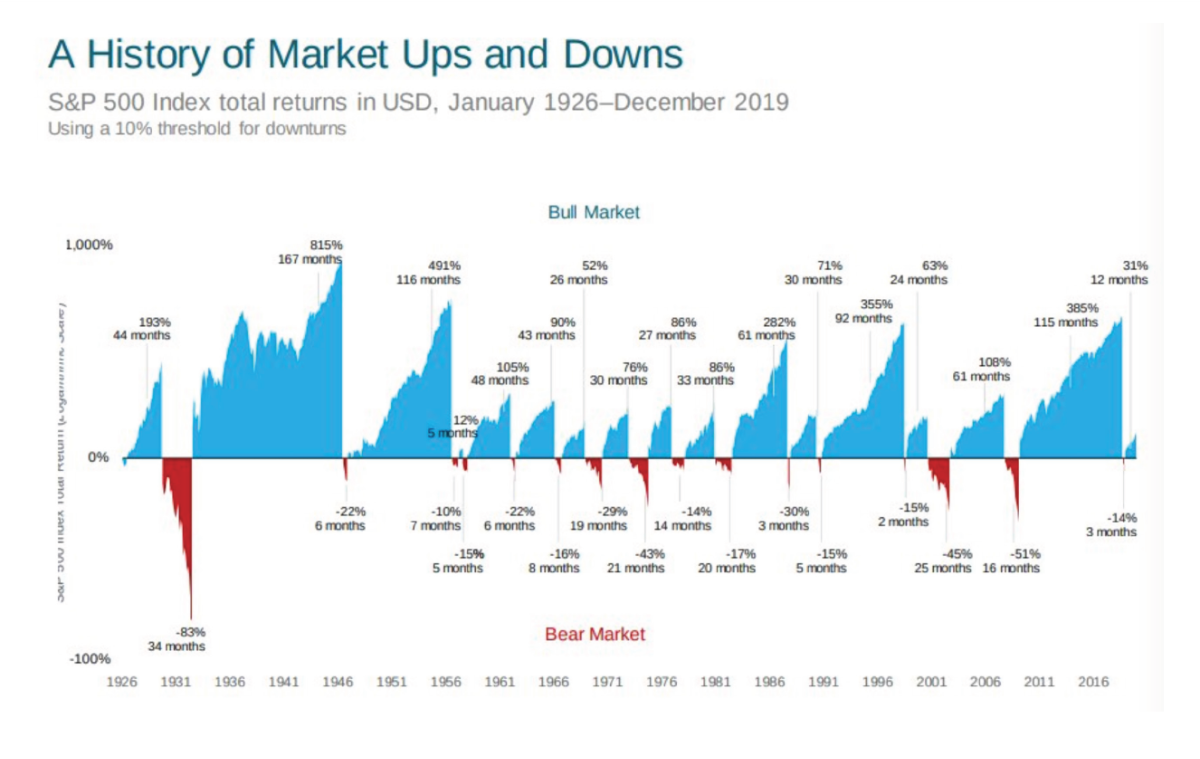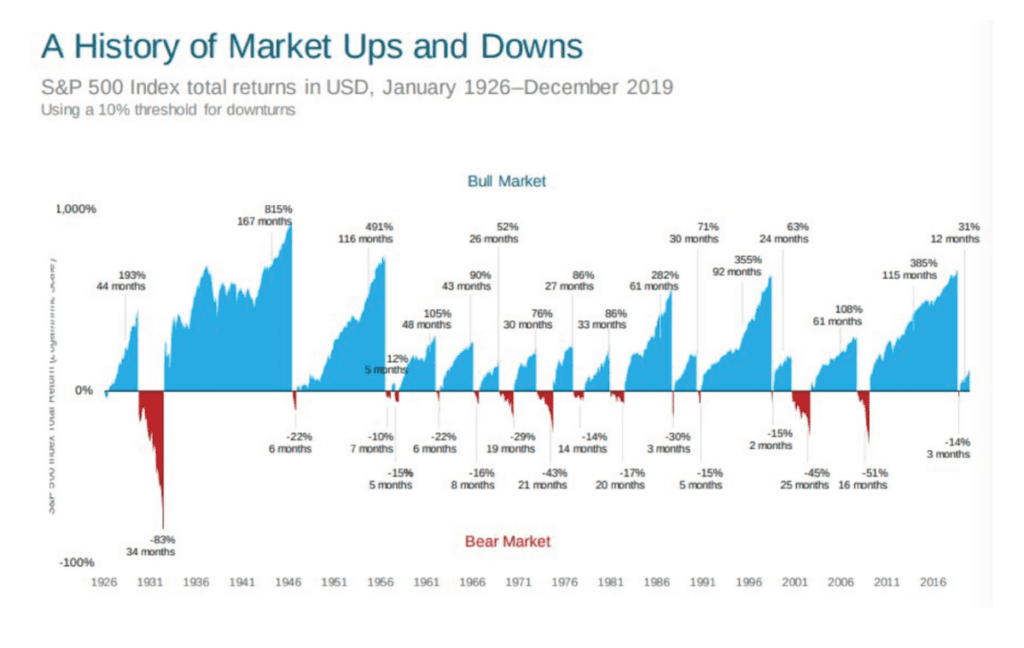It’s a strange time by all accounts, with a virus shutting down travel, activities, and commerce globally in an attempt to contain the spread. The COVID-19 pandemic should first be considered a health issue, and everybody should do what they can to protect themselves and their loved ones from the spread of the disease. It should go without saying that your health and well being is more important than your portfolio. But once health precautions are taken, it is appropriate to address the financial implications, and how best to navigate these challenging market conditions.
After a strong recovery day in the stock market on Tuesday, March 10th, we’ve now had 2 consecutive days of major declines. The investment markets have been in panic mode, partially as a result of the World Health Organization declaring the COVID-19 virus a global pandemic. The crude oil price war between Russia and Saudi Arabia is adding to the current economic concerns. Then there’s the considerable uncertainty that comes with presidential election years. Traders on Wall Street appear to be selling indiscriminately which has now caused the markets to drop into bear market territory (defined as a 20% decline from a market peak).
The stock market is a forward-looking mechanism and the declines we are experiencing are the market’s attempt to “price in” the economic impact of these issues. Of course, there’s really no way at this moment to know the extent of the damage so it’s difficult to know just where the bottom is. That said, there are things we do know that are especially important to remember in times like these.
Most of our clients’ portfolios have done much better than the overall stock market. During the downturn, 20-year Treasury bonds have gained 24% in value, as bond yields have fallen to record lows. The 10-year Treasury yield experienced its biggest weekly drop since December 2008. This performance, so directly counter to stock movements, reminds us why it is so necessary to hold diverse investments in a portfolio. The bond holdings in our portfolios have provided a significant buffer.
Another reason that client accounts have behaved quite differently from the popular stock indices is that our portfolio managers don’t just own the market. As an example, they’re typically less invested in some of the hot stocks that were extremely overvalued. They also have been making adjustments as necessary.
Disciplined portfolio rebalancing is also important during volatile markets. When an asset class such as stocks go down, we rebalance the portfolios back to the targeted weight and therefore are buying low in a disciplined way. This typically provides a major benefit over time.
Many of our conservative and moderate risk portfolios include tactical components that adjust portfolio allocations based on changing market conditions. These, and other defensive elements, have also helped cushion the downside.
Perhaps the harder conversation is about market timing. Most people agree that it’s not possible to consistently and reliably time the market without a working crystal ball. But this is easily forgotten when the daily headlines announce that your net worth is falling by several percent in a single day, and when the stock portion of your portfolio has fallen by 20+% in record time. The natural question is: Should I get out now and avoid more of the same?
There is only one rational answer to this question: It has never been a good idea to sell when everybody else is selling, just as it has never been a winning strategy to buy stocks when everybody else is wildly bullish. The best strategy has, in the past, been to ride out the downturn, rebalance, add money if possible, and be there to experience the subsequent upturn, whenever it comes.
Bear markets like the one we have just entered do pose a real danger to your financial health: Selling at the bottom and then missing out on the recovery. As an advisory firm that has navigated several periods of extreme volatility over the years, this is the primary thing we know to be true. For long-term money, today’s prices are not what’s important. Our fundamental goal is to protect and grow purchasing power over time. While stocks are one of the primary means to accomplish this, these periodic bouts of gut-wrenching volatility are unfortunately something we need to endure now and again in pursuit of that goal.
There are some practical considerations to keep in mind as we all work through this together. If you aren’t well, and have a scheduled appointment, please let us know if you would like to reschedule or if you’d like to opt for a phone call or remote (virtual) meeting. Please be patient with us if we need to reschedule your meeting due to illness. Our office is well equipped to operate remotely if necessary, to ensure continued service regardless of how things unfold in the coming days. Our home office (Portfolio Resources Advisor Group) has a comprehensive business continuity plan so they’ll be able to provide us with ongoing operational support. Practice self-care, especially in this stressful time, and please reach out with your questions or concerns.
Please read on if you’re interested in some additional historical context.
Historically, bear markets have been less impactful than their bull market counterparts, as you can see from the chart below. Of course, you could argue that a global pandemic is different from a housing market crash. Research analysts at Goldman Sachs took a look back at “event-driven” bear markets; that is, market declines that were not driven by an economic recession, but instead were triggered by things like war, oil price shocks, or an emerging-market crisis.They found that the average event-driven bear market resulted on average in a 29% decline in stocks. The report notes that we have never previously entered a bear market due to a viral outbreak, but in the past, bear markets triggered by external shocks have recovered their previous levels within 15 months.

